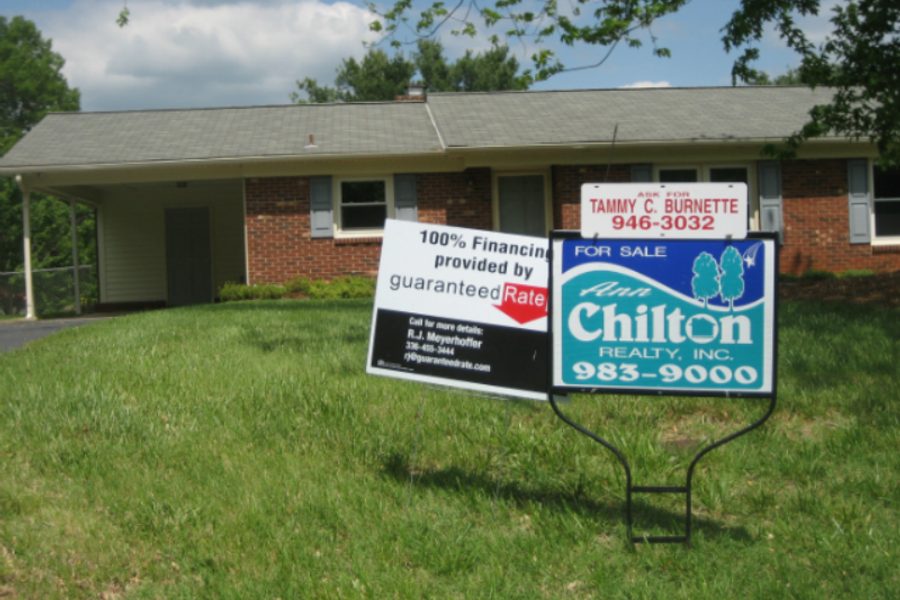Whither the American Dream?
In the wake of the foreclosure crisis, the Federal Housing Finance Agency has moved to make homeownership harder for ordinary Americans.
Mitria Wilson

Hollywood celebrity and actress Katie Holmes recently bought a $3.8 million home in Calabasas, California (near the famous Kardashian family) for her and her daughter, Suri. Actor Vince Vaughn last week closed on a $2.4 million home in Los Angeles with a lap pool.
Are celebrities the only Americans who should be able to afford a dream home? The federal government seems to think so.
In the wake of the foreclosure crisis, the federal government stepped in to rescue Fannie Mae and Freddie Mac and prevent a broader housing-market collapse. It is clear that the mortgage giants made some mistakes in the foreclosure crisis, including underestimating their amount of risk from defaults. But neither they nor consumers were the primary cause of the 2008 financial crisis: The blame for that belongs to financial institutions that made predatory lending their primary business model.
Nevertheless, the Federal Housing Finance Agency has forced Fannie and Freddie to adopt a series of policies, price hikes and additional fees that will make it much harder for the average American to buy a house.
In a recently released rule laying out goals for Fannie and Freddie to make housing more affordable, the Federal Housing Finance Agency projects that the number of low-income Americans who may actually be able to get a mortgage loan could continue to shrink from 26.6 percent to 19.8 percent by 2017. Before the housing-market crash, 45 percent could do so.
The Agency points to the need to ensure the “safety and soundness” of the mortgage industry as the ostensible reason for its actions. Yet, the changes it is proposing will force consumers to cover twice over the actual financial risk posed to Fannie and Freddie, resulting in soaring costs to homebuyers.
For example, this week the Agency closed public comments on its plan to make Fannie and Freddie raise the cost of private mortgage insurance premiums. As is, those who cannot afford to make a 20 percent down payment on their homes must purchase private mortgage insurance. But in the past, the typical cost of mortgage insurance premiums ranged from around 0.3 percent to 1.15 percent of the original loan amount per year. Using data from Moody’s, the National Community Reinvestment Coalition estimates that these costs will skyrocket to as much as 15 to 66 percent of the loan value under the Federal Housing Finance Agency’s new guidance.
It may seem reasonable for the Federal Housing Finance Agency to reassess the value of mortgage insurance and, in the process, raise the cost for consumers given the recently predicted spike in foreclosures. After all, private mortgage insurance safeguards Fannie and Freddie in the event of a default by guaranteeing to pay the difference between the amount of your down payment and your home’s actual value.
But there’s another problem: At the same time that the Federal Housing Finance Agency is seeking to raise the cost of private mortgage insurance, they are also charging and trying to raise the costs of another fee.
This new fee, called a loan-level pricing adjustment, is not required by law. It is intended to cover the costs of a default, and therefore serves essentially the same purpose as private mortgage insurance. Since private mortgage insurance already pays for defaults, reducing Fannie and Freddie’s losses to zero, loan-level pricing adjustments charge consumers twice for a risk that no longer exists. Still, the government has asked Fannie and Freddie to charge the fee to lenders. And lenders are, of course, passing on the cost to consumers.
When combined with increased primary mortgage insurance fees, these loan-level-pricing adjustments can cost middle-class homebuyers as much as an additional $150,000 over the usual cost of a 30-year mortgage.
That’s a lot of money to ask ordinary Americans to give away. Using the average cost of current in-state tuition, $150,000 can pay for three kids to go to college. And it’s as much as or more than what the average home currently sells for in 15 states.
Fannie and Freddie have always played an important role in the growth of the middle class. By making homeownership affordable and enabling its growth, they have been a key component in building wealth for the average American. It is important to preserve both the enterprises and their mission of putting homeownership within the reach for everyday people.
Unfortunately, in response to a market crash precipitated by predatory and risky lending, the Federal Housing Finance Agency’s response to Fannie and Freddie’s past errors has been to move to the opposite end of the spectrum. The federal government’s policy of charging loan-level-pricing adjustments on top of private mortgage insurance fees is a practice that should end. Instead of ratcheting up costs, mortgage finance reform should focus on expanding access to credit by encouraging lenders to make responsible mortgage loans. The government should stop double charging middle class Americans when they try to buy into the American dream.
Celebrities shouldn’t be the only Americans able to afford that option.




